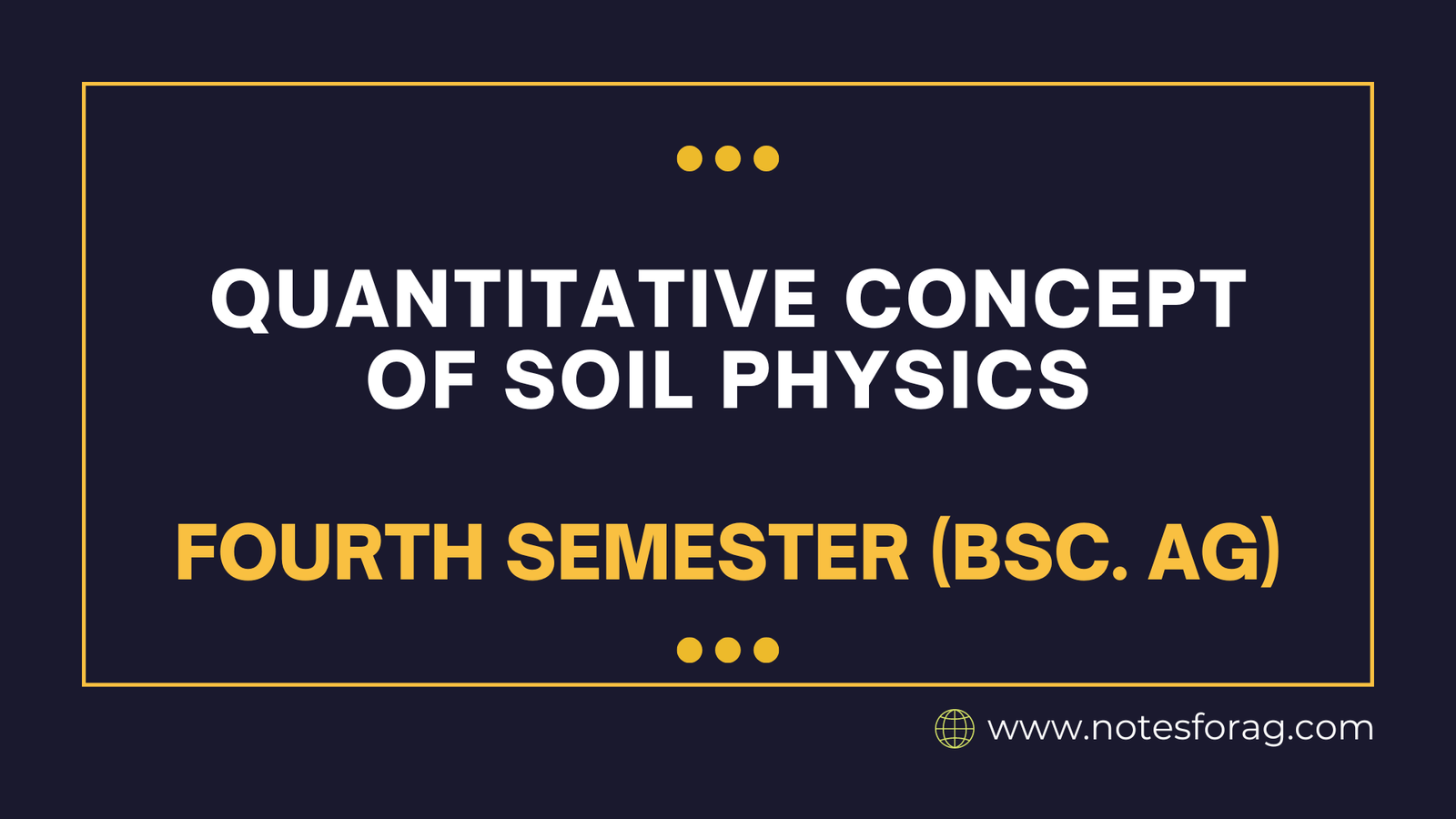Soil physics is brimming with quantitative concepts that describe the physical properties and processes. Understanding the physical qualities and activities of it, in particular its structure, moisture content, and energy state, is the focus of the field of it’s physics.
Table of Contents
Soil Water Potential
It is a measure of the energy status of water in the soil. The quantity of energy that a plant or another activity need in order to extract the water is reflected by this fact.

If the water potential is higher, then it will be simpler for plants to get their hands on the water. It determines the direction and rate of water movement and is influenced by several factors:
- Total Soil Water Potential (Ψ_total):
- The sum of all individual potentials affecting it. It can be expressed as:
Ψtotal=Ψg+Ψp+Ψo - where Ψg is the gravitational potential, Ψp is the pressure potential, and Ψo is the osmotic potential.
- The sum of all individual potentials affecting it. It can be expressed as:
- Gravitational Potential (Ψ_g):
- The potential energy due to the position of water in a gravitational field. It is given by: Ψg=gh
- Where ‘g’ is the acceleration due to gravity, and ‘h’ is the height above a reference level.
- Pressure Potential (Ψ_p):
- Also known as matric potential, it arises from the capillary and adsorption forces in it’s matrix. It is significant in unsaturated one and can be negative (tension) or positive (pressure).
- Also known as matric potential, it arises from the capillary and adsorption forces in it’s matrix. It is significant in unsaturated one and can be negative (tension) or positive (pressure).
- Osmotic Potential (Ψ_o):
- The potential due to the presence of solutes in soil water. It affects the movement of water from areas of low solute concentration to high solute concentration. It is typically negative because solutes lower the water potential.

Quantitative Expression of Soil-Water Potential
This can be quantitatively expressed as:
Ψtotal=Ψg+Ψp+Ψo
This expression combines the influences of gravity, pressure from matrix, and osmotic effects due to solutes.
Measurement of Soil Moisture
It can be measured using various methods, both direct and indirect:
- Gravimetric Method:
- A direct method where a it’s sample is weighed, dried in an oven at 105°C until constant weight is achieved, and then reweighed. It is calculated as:
Soil Moisture Content = Weight of Water / Dry Weight of Soil×100
- A direct method where a it’s sample is weighed, dried in an oven at 105°C until constant weight is achieved, and then reweighed. It is calculated as:
- Tensiometers:
- Measure the matric potential (pressure potential) of soil water. They consist of a porous cup filled with water connected to a manometer or pressure gauge.
- Measure the matric potential (pressure potential) of soil water. They consist of a porous cup filled with water connected to a manometer or pressure gauge.
- Time Domain Reflectometry (TDR):
- An indirect method using the propagation of electromagnetic waves through it. The travel time of the waves is used to calculate it’s moisture content.
- An indirect method using the propagation of electromagnetic waves through it. The travel time of the waves is used to calculate it’s moisture content.
- Neutron Scattering:
- Measures it’s moisture by detecting the scattering of neutrons. The presence of hydrogen atoms (mainly in water) affects the scattering of neutrons, providing a measure of it’s moisture.
- Measures it’s moisture by detecting the scattering of neutrons. The presence of hydrogen atoms (mainly in water) affects the scattering of neutrons, providing a measure of it’s moisture.
- Capacitance and Impedance Probes:
- Measure the dielectric properties, which change with it’s moisture content.
- Measure the dielectric properties, which change with it’s moisture content.
- Gypsum Blocks:
- These blocks absorb water and change their electrical resistance, which is then related to moisture content.
The particular metrics utilized vary depending on the study question or practical application. Researchers and agricultural professionals can acquire useful insights into it’s behavior, optimize water management, and increase crop output by implementing these quantitative approaches.
Conclusion
Understanding the energy concepts and quantitative measures of it’s moisture is crucial for efficient management, agriculture, and environmental studies. The measurement techniques provide valuable data for assessing water status and guiding irrigation practices.
Frequently Asked Questions (FAQs)
What is Time Domain Reflectometry (TDR)?
An indirect method using the propagation of electromagnetic waves through it. The travel time of the waves is used to calculate it’s moisture content.
How is gravitational potential measured?
The potential energy due to the position of water in a gravitational field. It is given by: Ψg=gh where ‘g’ is the acceleration due to gravity, and ‘h’ is the height above a reference level.
What is the Quantitative Expression of Soil-Water Potential?
This can be quantitatively expressed as:
Ψtotal=Ψg+Ψp+Ψo
Related Articles

